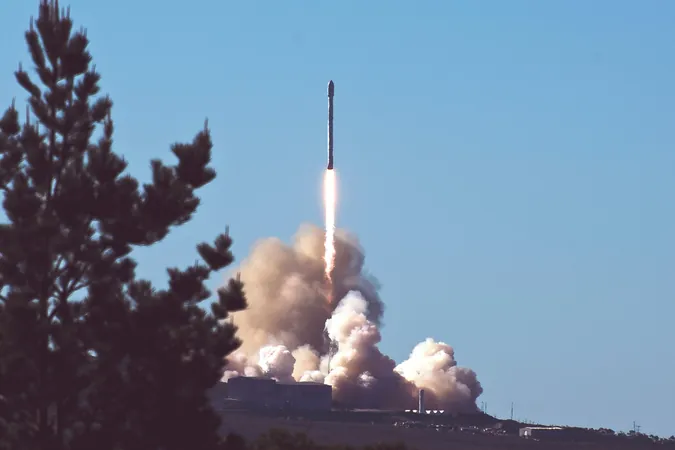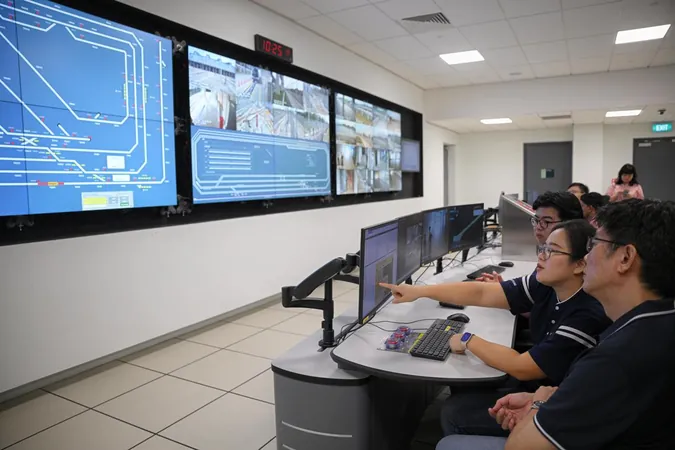
Revolutionary Discoveries in Kagome Lattice Superconductors: Are We Witnessing a New Era?
2025-03-13
Author: Wei Ling
Superconductivity, a fascinating quantum phenomenon characterized by zero electrical resistance at extremely low temperatures, has long captured the interest of physicists. The formation of Cooper pairs, which are bound electron pairs, is traditionally viewed as a key factor behind this elusive state. However, the intricacies of what triggers superconductivity in quantum materials have remained a puzzle for researchers worldwide.
In a groundbreaking study, a team comprising scientists from Princeton University, the National High Magnetic Field Laboratory, the Beijing Institute of Technology, and the University of Zurich has shed new light on the superconducting behavior of CsV₃Sb₅, a material with a unique Kagome lattice structure. This structure, reminiscent of the woven patterns found in Kagome baskets, allows for the exploration of unusual electronic properties that could revolutionize our understanding of superconductivity.
Published in *Nature Physics*, the paper reveals the existence of two distinct superconducting regimes within CsV₃Sb₅, each associated with different thermodynamic and transport behaviors. "Our earlier work in 2021 on a chiral charge density wave in Kagome superconductors triggered a surge of excitement in the quantum materials field," said Shafayat Hossain, the lead author of the study. "These unique superconductors break multiple symmetries before settling into a superconducting state, leading us to believe they could possess an unconventional superconducting nature."
Initially, the researchers were skeptical about the exotic nature of superconductivity in AV₃Sb₅ materials (where A represents K, Rb, or Cs). However, they meticulously examined CsV₃Sb₅ using advanced transport and thermodynamic techniques to uncover its phase diagram. Their measurements revealed unexpected complexities, indicating two distinct superconducting states, marked by a sharp increase in upper critical fields—a revelation that caught the research team by surprise.
In their comprehensive study, the team analyzed the upper critical fields as a function of temperature and magnetic field orientations, both parallel and perpendicular to the conducting planes of the material. They discovered that these measurements revealed extraordinary phenomena, such as two notable changes in heat capacity across temperatures, signaling the emergence of two different superconducting gaps.
Luis Balicas, a senior author of the research, emphasized the significance of their findings: "We also observed that thermal conductivity shows a consistent contribution prior to the opening of the second gap, implying that significant portions of the Fermi surface remain ungapped even in the superconducting state."
Moreover, interestingly, the behavior of thermal conductivity became anisotropic, indicating that the superconducting state in CsV₃Sb₅ possesses a complex gap structure that could be unconventional in nature. Balicas explained, "The anisotropic gap function becomes particularly pronounced with the opening of the second superconducting gap, although its pairing symmetry remains elusive."
The findings from this study suggest that CsV₃Sb₅ may exhibit band-selective superconductivity—a variant where different electron bands have independent superconducting gaps. This concept poses exciting opportunities for exploring new superconducting states yet to be characterized.
The implications of this research extend beyond CsV₃Sb₅; they could pave the way for new understandings of superconductivity in related Kagome lattice materials. "With an impressive lineage of research surrounding cuprates and iron pnictides, the discovery of new superconductors in this arena presents thrilling prospects," encouraged Hossain. "We remain on the lookout for more unexpected quantum states, as Kagome superconductors continue to surprise us."
Future investigations will focus on delving deeper into the unconventional gap structures and other intriguing states that may possess unique topological properties. With the potential to revolutionize technological applications—from quantum computing to magnetic resonance imaging—the findings surrounding CsV₃Sb₅ could define the next chapter in superconductivity research. The excitement surrounding these discoveries suggests we are only scratching the surface of what these complex materials can reveal.



 Brasil (PT)
Brasil (PT)
 Canada (EN)
Canada (EN)
 Chile (ES)
Chile (ES)
 Česko (CS)
Česko (CS)
 대한민국 (KO)
대한민국 (KO)
 España (ES)
España (ES)
 France (FR)
France (FR)
 Hong Kong (EN)
Hong Kong (EN)
 Italia (IT)
Italia (IT)
 日本 (JA)
日本 (JA)
 Magyarország (HU)
Magyarország (HU)
 Norge (NO)
Norge (NO)
 Polska (PL)
Polska (PL)
 Schweiz (DE)
Schweiz (DE)
 Singapore (EN)
Singapore (EN)
 Sverige (SV)
Sverige (SV)
 Suomi (FI)
Suomi (FI)
 Türkiye (TR)
Türkiye (TR)
 الإمارات العربية المتحدة (AR)
الإمارات العربية المتحدة (AR)